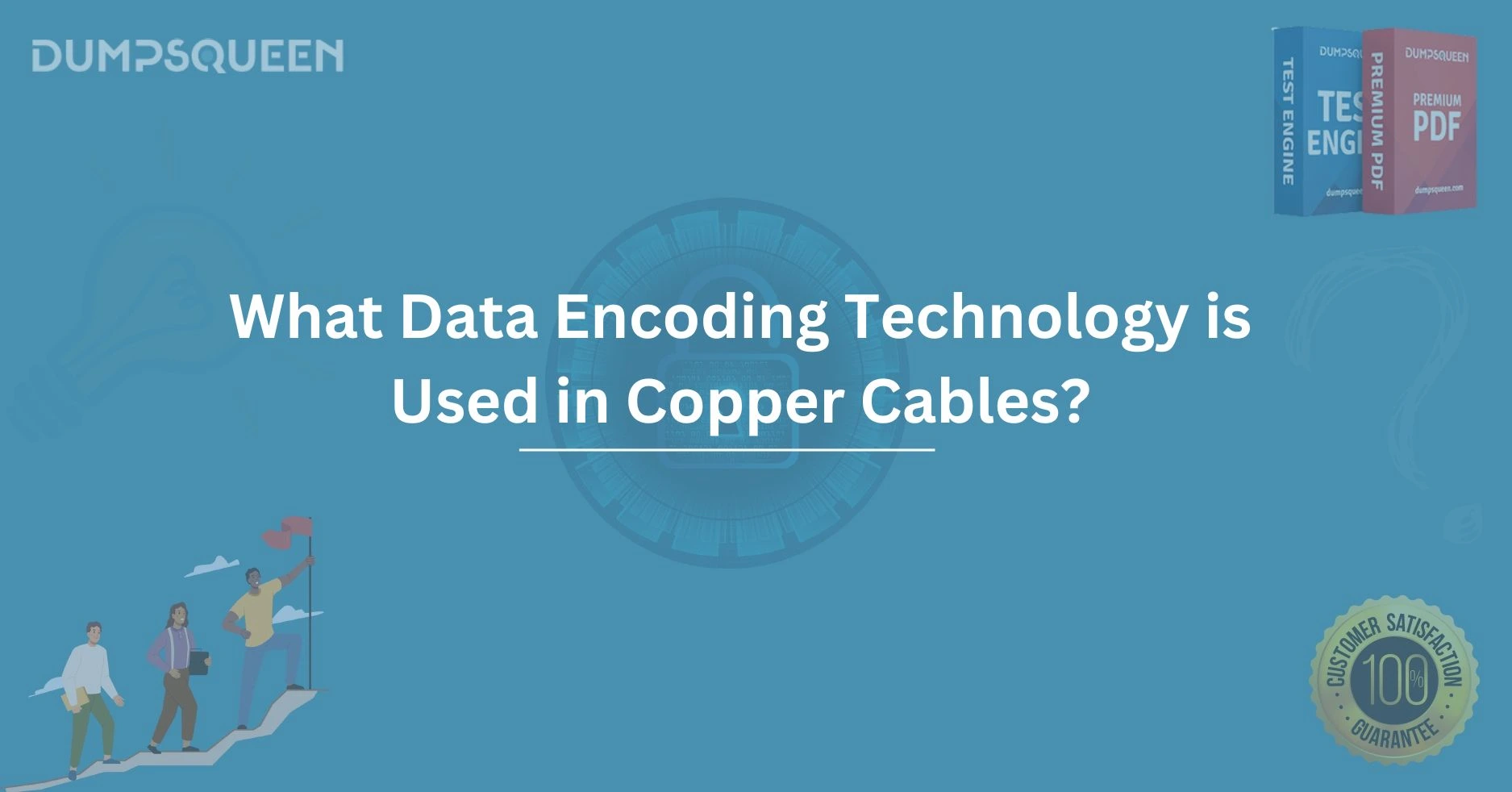Introduction
In today's rapidly advancing technological landscape, data transmission plays a crucial role in almost every industry. From internet connectivity to telecommunications and networking, the need for reliable and efficient data encoding technologies has never been more significant. Copper cables, a staple in the transmission of data, continue to be widely used despite the rise of fiber optics and wireless technologies. Their affordability, ease of installation, and proven performance make them a popular choice for various data transmission applications.
However, the technology used to encode data transmitted through copper cables is a key factor that determines the speed, reliability, and efficiency of the communication process. Data encoding in copper cables involves a range of techniques and standards designed to optimize the use of the physical medium while minimizing signal degradation, interference, and loss of data integrity. Understanding the technologies used in copper cables is crucial for both consumers and businesses seeking to improve their data transmission capabilities.
In this blog, we will explore the different data encoding technologies employed in copper cables, how they work, and their impact on modern communication systems.
What is Data Encoding in Copper Cables?
Data encoding is the process of converting digital data into signals suitable for transmission over a physical medium, such as copper cables. Copper cables, primarily twisted pair cables (like Cat 5e, Cat 6, and Cat 6a), and coaxial cables, are commonly used for transmitting data in wired networks. The encoding process ensures that the digital data, which consists of binary code (1s and 0s), is effectively transmitted as electrical signals.
Copper cables transmit signals in the form of voltage or current changes. However, these signals can degrade over long distances due to factors like electromagnetic interference (EMI) or signal attenuation. To mitigate these issues, various encoding technologies are used to ensure that the transmitted data remains accurate, reliable, and immune to external noise.
Types of Data Encoding Technologies Used in Copper Cables
There are several data encoding methods employed to optimize data transmission over copper cables. Each technology has its advantages, and the choice of encoding depends on the specific requirements of the communication system. Below are some of the most widely used encoding technologies in copper cables:
1. Non-Return to Zero (NRZ)
Non-Return to Zero (NRZ) is one of the simplest data encoding techniques. In NRZ encoding, a '1' is represented by a high voltage (or positive current), while a '0' is represented by a low voltage (or zero current). There is no return to zero voltage between consecutive bits. This simplicity makes NRZ a highly efficient encoding method, but it comes with certain limitations.
The primary issue with NRZ is its lack of synchronization. Since there is no voltage transition between consecutive bits, it can be difficult for the receiver to maintain timing, especially over long distances. This can lead to errors in data transmission, making NRZ less suitable for high-speed or long-distance communication.
2. Manchester Encoding
Manchester encoding, also known as Phase Encoding, is a more sophisticated data encoding method that addresses the limitations of NRZ. In Manchester encoding, each bit is represented by two voltage transitions, providing both data and clock synchronization in the same signal. A '1' is represented by a high-to-low transition, and a '0' is represented by a low-to-high transition.
One of the key benefits of Manchester encoding is that it ensures reliable synchronization, making it ideal for high-speed data transmission over copper cables. However, because each bit requires two transitions, Manchester encoding requires more bandwidth than NRZ, leading to lower transmission efficiency.
3. 4B/5B Encoding
4B/5B encoding is commonly used in high-speed data communication, such as in Gigabit Ethernet (1000BASE-T). In this method, each group of 4 bits is encoded into a 5-bit symbol, which ensures that the signal has enough transitions to maintain synchronization and avoid long sequences of 0s or 1s.
The 4B/5B encoding method is used in conjunction with a more advanced encoding technique, such as MLT-3 (Multi-Level Transmit-3), which further reduces signal interference and supports high-speed data transmission over copper cables. The 4B/5B scheme helps to prevent the transmission of long strings of identical bits, which could otherwise lead to synchronization issues.
4. 8B/10B Encoding
8B/10B encoding is similar to 4B/5B encoding, but it encodes 8 bits into 10 bits. This encoding scheme is widely used in high-performance communication systems, such as Fibre Channel, Gigabit Ethernet, and USB. The key advantage of 8B/10B encoding is its ability to provide a DC-balanced signal, which ensures that there are an equal number of 1s and 0s over the transmission.
The 8B/10B encoding process ensures that the signal contains sufficient transitions to maintain clock synchronization while minimizing the risk of signal degradation. This technology is particularly beneficial for high-speed data transmission over longer distances, where signal integrity is crucial.
5. Pulse Amplitude Modulation (PAM)
Pulse Amplitude Modulation (PAM) is an encoding technique used in modern high-speed data transmission systems, including those that utilize copper cables. In PAM, the amplitude of a pulse is varied to represent different data values. For example, in PAM-4 encoding, 4 different amplitude levels are used to represent 2 bits of data per pulse.
PAM encoding is often used in combination with advanced modulation techniques to achieve high data rates while maintaining signal integrity. PAM-4, for example, is employed in Ethernet standards such as 400GbE, where it allows for faster data transmission over copper cables while minimizing the impact of noise and interference.
6. Multi-Level Signaling (MLS)
Multi-Level Signaling (MLS) is a technique that uses multiple voltage levels to encode more than one bit per signal transition. This allows for higher data rates and more efficient use of the available bandwidth. MLS is commonly used in high-speed data transmission standards, such as 10GBASE-T (10 Gigabit Ethernet) and beyond.
By using multiple voltage levels, MLS encoding reduces the need for high-frequency signaling, which can lead to signal loss and interference in copper cables. This makes it an ideal encoding method for long-distance high-speed communication.
Factors Affecting Data Encoding in Copper Cables
Several factors can influence the performance of data encoding technologies in copper cables. These include:
-
Signal Integrity: Copper cables are susceptible to noise, electromagnetic interference (EMI), and crosstalk, all of which can degrade signal quality. Encoding technologies must ensure that data is transmitted accurately despite these challenges.
-
Distance: The longer the copper cable, the more attenuation and signal degradation occur. Certain encoding methods, such as Manchester and 8B/10B, are better suited for longer distances due to their ability to maintain synchronization and prevent signal loss.
-
Bandwidth: High-speed data transmission requires higher bandwidth, which is a key consideration when selecting an encoding method. Encoding schemes like 4B/5B and 8B/10B help increase bandwidth efficiency.
-
Power Consumption: Some encoding techniques, such as PAM-4, can reduce power consumption by transmitting more data per signal pulse, which is crucial for modern networking equipment where power efficiency is a priority.
Conclusion
Data encoding is a fundamental aspect of copper cable-based communication systems, ensuring that digital data can be transmitted reliably and efficiently across a variety of networks. Technologies like NRZ, Manchester encoding, 4B/5B, 8B/10B, and PAM play pivotal roles in maintaining synchronization, signal integrity, and high-speed performance in these systems. As data transmission demands continue to rise, especially in high-speed networks, the importance of these encoding technologies will only grow.
By understanding the different encoding methods and their advantages, network engineers and IT professionals can make informed decisions when designing and maintaining copper cable-based communication systems. As the demand for faster, more reliable networks increases, copper cables, combined with advanced data encoding technologies, remain an essential component of the global digital infrastructure.
Free Sample Questions
1. Which of the following encoding methods is most commonly used in high-speed data transmission over copper cables?
A) NRZ Encoding
B) Manchester Encoding
C) 4B/5B Encoding
D) Pulse Code Modulation
Answer: C) 4B/5B Encoding
2. What is the primary advantage of Manchester encoding over NRZ encoding?
A) Higher bandwidth efficiency
B) Better synchronization and clock recovery
C) Lower power consumption
D) Reduced signal interference
Answer: B) Better synchronization and clock recovery
3. Which encoding technology uses multiple voltage levels to represent multiple bits per signal transition?
A) PAM-4 Encoding
B) 8B/10B Encoding
C) Manchester Encoding
D) NRZ Encoding
Answer: A) PAM-4 Encoding




